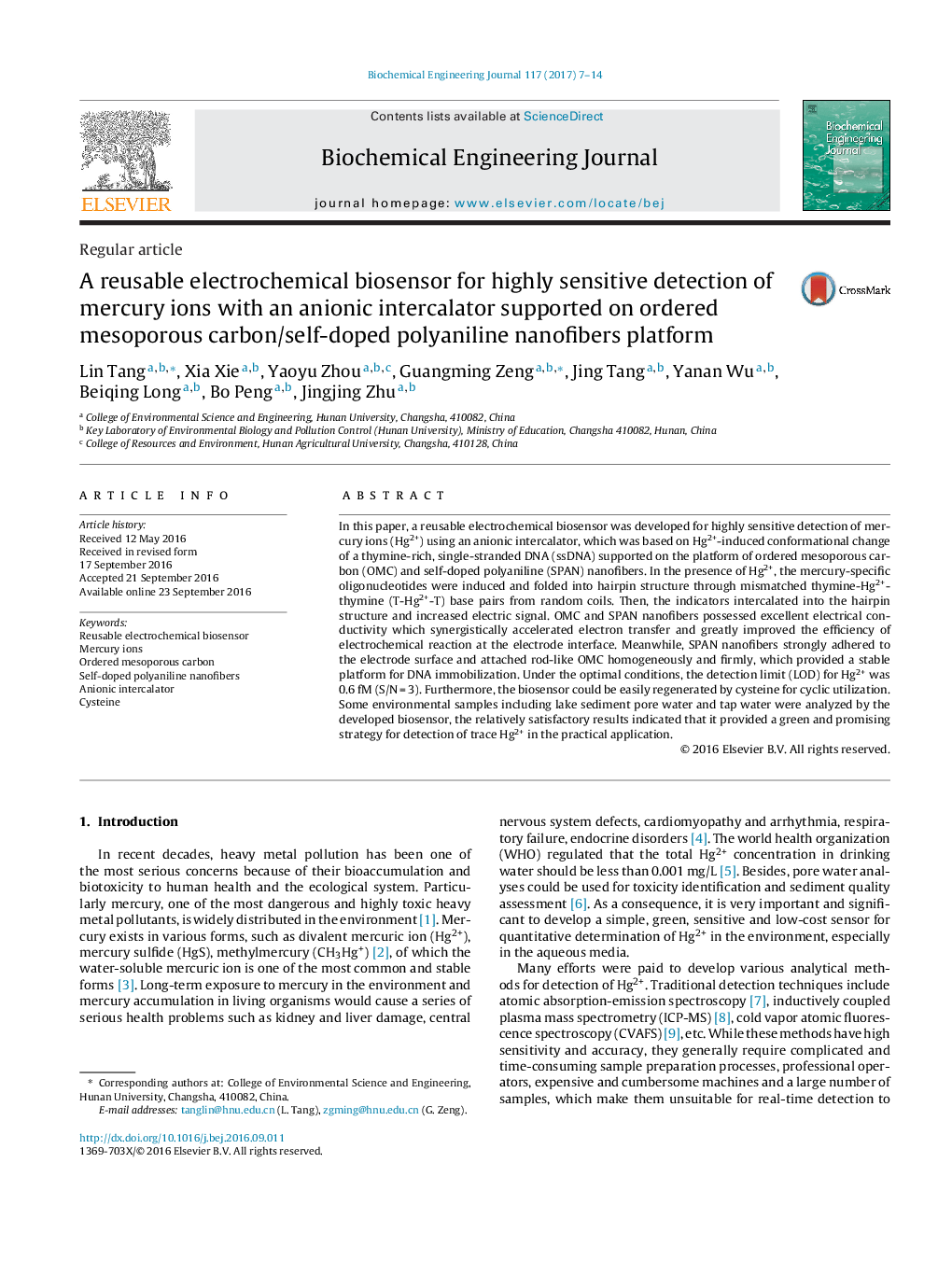| کد مقاله | کد نشریه | سال انتشار | مقاله انگلیسی | نسخه تمام متن |
|---|---|---|---|---|
| 4752187 | 1361276 | 2017 | 8 صفحه PDF | دانلود رایگان |
- SPAN nanofibers and OMC modified electrode showed good conductivity and stability.
- An Hg2+ biosensor with good regenerability was constructed based on the electrode.
- The proposed Hg2+ biosensor exhibited a wide linear range and low detection limit.
- The biosensor was used to analyze Hg2+ in lake sediment pore water and tap water.
In this paper, a reusable electrochemical biosensor was developed for highly sensitive detection of mercury ions (Hg2+) using an anionic intercalator, which was based on Hg2+-induced conformational change of a thymine-rich, single-stranded DNA (ssDNA) supported on the platform of ordered mesoporous carbon (OMC) and self-doped polyaniline (SPAN) nanofibers. In the presence of Hg2+, the mercury-specific oligonucleotides were induced and folded into hairpin structure through mismatched thymine-Hg2+-thymine (T-Hg2+-T) base pairs from random coils. Then, the indicators intercalated into the hairpin structure and increased electric signal. OMC and SPAN nanofibers possessed excellent electrical conductivity which synergistically accelerated electron transfer and greatly improved the efficiency of electrochemical reaction at the electrode interface. Meanwhile, SPAN nanofibers strongly adhered to the electrode surface and attached rod-like OMC homogeneously and firmly, which provided a stable platform for DNA immobilization. Under the optimal conditions, the detection limit (LOD) for Hg2+ was 0.6 fM (S/NÂ =Â 3). Furthermore, the biosensor could be easily regenerated by cysteine for cyclic utilization. Some environmental samples including lake sediment pore water and tap water were analyzed by the developed biosensor, the relatively satisfactory results indicated that it provided a green and promising strategy for detection of trace Hg2+ in the practical application.
158
Journal: Biochemical Engineering Journal - Volume 117, Part A, 15 January 2017, Pages 7-14
